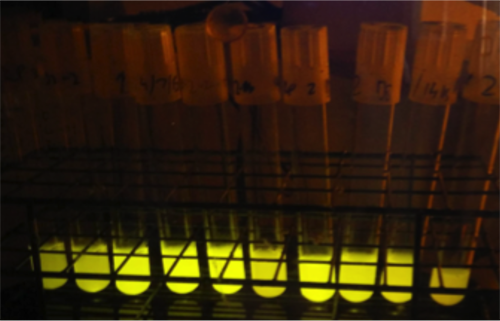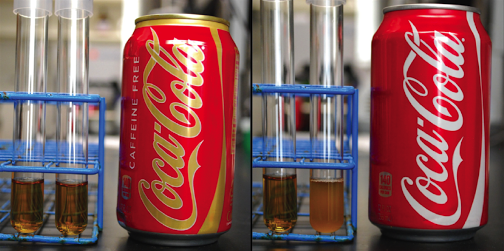Difference between revisions of "Team:Austin UTexas"
Kvasudevan (Talk | contribs) |
Kvasudevan (Talk | contribs) |
||
| Line 5: | Line 5: | ||
<font size="3"> | <font size="3"> | ||
<h3><font face="Courier New">BREAKING IS BAD</font></h3> | <h3><font face="Courier New">BREAKING IS BAD</font></h3> | ||
| + | <hr> | ||
<br> | <br> | ||
| − | <font color="000000"> | + | <font color="000000">The 2015 UT Austin iGEM Team's major project is primarily concerned with the stability of genetically modified devices in bacteria. Devices run the risk of breaking, or mutating, if they prove to be too much metabolic stress to an organism. We endeavored to identify and better characterize the types of sequences that are prone to breaking, and used fluorescent-protein coding strains of <i>E. coli</i> to observe breaking speed.</font><br> |
<br> | <br> | ||
</html> | </html> | ||
| − | [[Image:2015_Austin_UTexas_homepage-BB.png| | + | [[Image:2015_Austin_UTexas_homepage-BB.png|300px]] |
<html> | <html> | ||
<br> | <br> | ||
| Line 22: | Line 23: | ||
<hr> | <hr> | ||
<br> | <br> | ||
| − | + | </html> | |
| − | <br> | + | [[Image:2015_Austin_UTexas_homepage-caffeine.png|250px| right]] |
| + | <html> | ||
| + | We constructed plasmids that are capable of degrading different methylxanthines and allowing us to accurately measure their concentrations. The 2012 UT Austin iGEM team, with the help of Dr. Erik Quandt, developed the ΔguaB pDCAF3 strain that could measure the concentration of caffeine by degrading it into a viable replacement for guanine. The 2015 team modified the pDCAF3 strain into seven plasmids that could degrade different methylxanthines with fairly high specificity.<br> | ||
<a href="https://2015.igem.org/Team:Austin_UTexas/Project/Caffeine"><font color="017e70"><b>GO TO CAFFEINE PAGE</b></font></a> | <a href="https://2015.igem.org/Team:Austin_UTexas/Project/Caffeine"><font color="017e70"><b>GO TO CAFFEINE PAGE</b></font></a> | ||
<br> | <br> | ||
| Line 30: | Line 33: | ||
<b>References</b></br> | <b>References</b></br> | ||
<h6>Quandt, Erik M., et al. "Decaffeination and measurement of caffeine content by addicted Escherichia coli with a refactored N-demethylation operon from Pseudomonas putida CBB5." ACS synthetic biology 2.6 (2013): 301-307.</br></h6> | <h6>Quandt, Erik M., et al. "Decaffeination and measurement of caffeine content by addicted Escherichia coli with a refactored N-demethylation operon from Pseudomonas putida CBB5." ACS synthetic biology 2.6 (2013): 301-307.</br></h6> | ||
| − | |||
| − | |||
| − | |||
| − | |||
| − | |||
| − | |||
<br> | <br> | ||
<br> | <br> | ||
| − | |||
| − | |||
</html> | </html> | ||
Revision as of 23:16, 17 September 2015
UT Austin iGEM 2015 Home
BREAKING IS BAD
The 2015 UT Austin iGEM Team's major project is primarily concerned with the stability of genetically modified devices in bacteria. Devices run the risk of breaking, or mutating, if they prove to be too much metabolic stress to an organism. We endeavored to identify and better characterize the types of sequences that are prone to breaking, and used fluorescent-protein coding strains of E. coli to observe breaking speed.

GO TO PROJECT PAGE
CAFFEINATED COLI
We constructed plasmids that are capable of degrading different methylxanthines and allowing us to accurately measure their concentrations. The 2012 UT Austin iGEM team, with the help of Dr. Erik Quandt, developed the ΔguaB pDCAF3 strain that could measure the concentration of caffeine by degrading it into a viable replacement for guanine. The 2015 team modified the pDCAF3 strain into seven plasmids that could degrade different methylxanthines with fairly high specificity.
GO TO CAFFEINE PAGE
References
